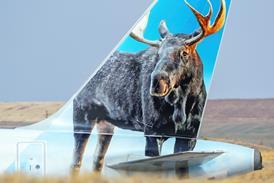A government study using a new type of anthropomorphic dummy and inflatable shoulder restraints, could pave the way for business jet makers and completion shops to increase passenger numbers and safety on aircraft with side-facing divans and couches.
The assessment, prepared by the US Federal Aviation Administration's Civil Aerospace Medical Institute (CAMI) in Oklahoma City, was designed in part to test occupant protection levels when using side-facing seats.
The work was done to support FAA efforts to create new regulations for side-facing seats, particularly for neck injuries. Today, side-facing seats are certified on a case-by-case basis using "issue papers" for acceptable thoracic, pelvic and head impact levels.
During the tests, FAA engineers acquired data, including neck forces, abdominal forces and femur torsion, using impact sleds carrying anthropomorphic test dummies developed by the car industry for side-impact studies, on "side-facing sofa fixture with cushion construction representative of current business jets", says the report.
Restraint systems tested included traditional three-point shoulder/lap belts with inertia reel and similar restraints with AmSafe Aviation inflatable air bags built into the shoulder strap.
A key finding in the tests was that shoulder harnesses equipped with airbags "significantly" reduced head accelerations, neck loads, chest acceleration and rib deflections in most cases.
With less flailing, manufacturers and completions centres could potentially certify divans for full occupancy during take-off and landing.
Currently, operators must limit side-facing divans designed for three or more passengers to just one person for take-offs and landings because of the potential for head injuries during rapid deceleration events, with passengers hitting each other or nearby walls or armrests.
Related story
Related article
Source: FlightGlobal.com























